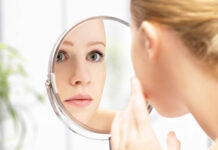Summer is just around the corner. You want to brown in the sun but without risking the health of your skin. But, do you know how to choose the right protector for your skin and for yours? And how to apply it?
In moderate doses, the sun provides a healthy golden tone to the skin. But it has adverse effects: loss of hydration, burns, premature skin aging or long-term cell damage. Preventing them is as easy as protecting yourself well from the sun. To do it correctly we solve the 5 typical doubts that arise every time we think of lying on the sand.
1. Does the hair burn in the sun?
Not exactly, but it deteriorates a lot. “Sunlight creates free radicals that break down hair proteins, damaging the cuticle and helping the hair to lose color. The situation is aggravated if other enemies of the hair fiber are added, such as saltpeter and chlorine, or if the hair it is tinted, because it is more porous. So as not to regret it conveniently protect it from the sun step by step ; with creams or oils, wash it with a mild shampoo and rehydrate it afterwards, advises Óscar Moreno, Aveda Spain’s director of training. “And whenever possible, cover it with a hat or a scarf,” he adds.
2. What is aftersun for?
Contrary to popular belief, its function is not to prevent you from peeling if you have burned yourself, as this is a practically inevitable process. Their mission is to minimize sun damage, one of the “cons” of sunbathing . Hence in the composition there is usually shea butterTo nourish and alleviate dryness, aloe vera or calendula to calm and help repair, and cooling agents such as menthol to alleviate overheating. “We must not forget that the damage from ultraviolet radiation continues even hours after putting us in the shade,” recalls Leticia Carrera. In other words: free radicals will be altering cellular DNA even late at night. That is why it is convenient to apply the aftersun as soon as possible , especially those formulas enriched with antioxidants. Remember: well-groomed skin keeps tanning longer.
3. What do I put on the children?
If they are under six months, always covered. From that age they can enjoy the sun but with caution: their skin is thinner, more vulnerable and with an excellent memory of each burn. In fact, 80% of the accumulated sun damage in our lives occurs before the age of 18. The latest innovations include lotions that are easy to spread even on wet skin, with fun formats that do not lose reliability even if they are splashing for more than an hour.
4. Should we wait to dry?
Usually yes. “The effect of the filters is diluted with water and the protection falls into a tailspin. In a wet skin an SPF 50 becomes only 30, unless it has a hydrophobic formula that prevents it from mixing with the drops of water on the skin “, warns Mercedes Abarquero, scientific manager of Vichy. This technology makes possible a perfect distribution throughout the body, without the usual unpleasant white film when we have not dried well. These products are perfect for athletes and teenagers, little friends waiting to dry to put on the sun cream.
5. Will it get pimples?
The sun is a false friend of acne, and oily skin should not let its guard down. The antibacterial action of the sun (and more if the antiseptic benefits of marine iodine are added) usually improves the state of the grains. But that does not exempt them from taking adequate protection measures. “An overly oily texture can clog the pores creating the perfect breeding ground for the dreaded summer breakouts that affect some oily skin,” explains dermatologist Elia Roó, from Clider Clinic. How to get it right? If you don’t want to risk it, look on the packaging for the phrase “non-comedogenic” or “dry touch”.It means that it has ingredients that control excess sebum. At the end of the day, do not forget to clean your face well to remove that layer formed by the remains of the protector, dirt, sebum and sweat.













